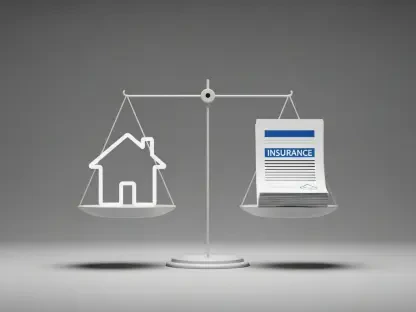In a landscape where public sector insurance programs face mounting pressures from rising healthcare costs and evolving employee needs, the Group Insurance Board (GIB) has taken decisive steps to address these challenges head-on. During a recent meeting, the Board delved into the intricacies of the Group Health Insurance Program (GHIP) and the Wisconsin Public Employers (WPE) Group Life Insurance Program, as outlined in a detailed update from the Employee Trust Funds (ETF). The discussions centered on striking a delicate balance between maintaining competitive benefits for public employees and ensuring the financial sustainability of these programs. With a focus on health plan designs, premium adjustments, and operational enhancements, the Board’s efforts reflect a commitment to navigating complex cost dynamics while prioritizing access and quality. This comprehensive approach aims to safeguard the interests of diverse member populations across varying geographic and economic contexts, setting the stage for meaningful reforms.
Evaluating Health Plan Designs for Sustainability
The core of the recent discussions revolved around a comparative analysis of GHIP’s non-Medicare plan designs, which revealed a striking contrast to both public and private sector offerings, as well as the broader health insurance marketplace. Notably, GHIP provides lower member cost-sharing and more extensive coverage, a benefit that stands out as a key advantage for recruitment and retention in a competitive labor market. However, this generosity comes with hidden challenges, as it may mask escalating medical and pharmacy expenses that could strain the program’s finances over time. Such cost pressures risk translating into higher premiums, potentially burdening members if left unaddressed. The ETF is actively exploring strategies to mitigate these risks, including refining plan designs to better support chronic condition management and aligning cost-sharing with the actual value of services. These measures aim to guide members toward more cost-effective care settings while preserving access, particularly in rural and underserved areas, ensuring that benefits remain robust without compromising fiscal health.
Beyond immediate cost concerns, the Board is also focused on simplifying administrative complexities to enhance efficiency and improve the overall member experience. Ensuring access to quality care in diverse regions remains a priority, as does maintaining a competitive edge in benefits to attract and retain talent. To this end, ongoing deliberations are set to continue in the coming months, with detailed recommendations and benchmarking analyses expected to inform critical decisions. Final determinations on plan changes for the period leading up to 2027 are slated for early next year, providing a clear timeline for implementing necessary adjustments. This forward-thinking approach underscores a commitment to balancing immediate member needs with long-term program viability. By addressing both financial and operational challenges, the ETF aims to create a more resilient framework that can adapt to evolving healthcare trends and economic realities, ensuring that public employees continue to receive high-quality coverage without undue fiscal strain.
Adjusting Life Insurance Premiums for Stability
Another pivotal outcome of the meeting was the approval of premium adjustments for the WPE Group Life Insurance Program, guided by recent financial performance data and actuarial insights. For the State plan, a modest 5% premium increase is set to take effect on April 1, 2026, as part of a broader strategy to achieve fully funded status by 2028. Meanwhile, the Local plan will see a $0.35 increase per unit of spouse and dependent coverage, raising the rate from $1.60 to $1.95, effective July 1, 2026. Importantly, premiums for State spouse and dependent coverage, as well as Local employee coverage, will remain unchanged, reflecting a careful effort to minimize the impact on members. This measured approach highlights a consensus on the importance of stabilizing the program’s financial foundation while keeping affordability in mind. By implementing incremental adjustments, the Board seeks to ensure the long-term sustainability of life insurance benefits without placing excessive burdens on public employees and their families.
In parallel, the ETF provided updates on additional operational and strategic initiatives that complement these premium changes. For the Local GHIP, potential structural reforms are under consideration to better control costs, with plans to issue a request for proposal to administer specific plans and gather input from local employers and members. These steps aim to tailor solutions to the unique needs of local contexts, fostering greater alignment between program design and financial goals. Additionally, the transition of pre-tax savings accounts administration to a new provider is progressing smoothly, with preparations underway for notifications and system setups ahead of open enrollment. Such operational enhancements are critical to maintaining member trust and ensuring seamless access to benefits. Together, these efforts demonstrate a holistic strategy that pairs financial adjustments with administrative improvements to strengthen the overall stability and effectiveness of public insurance programs.
Driving Quality and Modernization in Operations
The meeting also shed light on ongoing initiatives to elevate quality and modernize operations within public insurance programs. A review of the Quality Credit Program revealed that while many health plans perform well against national benchmarks, sustained improvement across key performance measures remains limited to only a handful of plans. This finding has prompted the ETF to explore alternative methods to drive consistent quality enhancements, ensuring that members receive top-tier care regardless of their plan. Simultaneously, operational transitions are gaining momentum, with the successful launch of a new Insurance Administration System for a segment of employees marking a significant milestone. This online platform, designed to streamline access to a range of insurance information, is poised for broader rollout to state and local members, employers, and retirees by next summer. Such modernization efforts are vital for improving transparency and user experience in an increasingly digital landscape.
Looking at other operational strides, the Board emphasized the importance of sustainability and efficiency as guiding principles for future reforms. The dual focus on premium adjustments and innovative plan designs reflects a nuanced understanding of the need to balance generous benefits with fiscal responsibility. This approach also acknowledges the diverse needs of member populations, particularly in varying geographic and economic settings, ensuring that access and quality remain uncompromised. The consensus on these priorities signals a proactive stance on mitigating rising costs through strategic interventions. As discussions advance, the insights gained from quality reviews and system upgrades will play a crucial role in shaping policies that enhance both member satisfaction and program resilience. This multifaceted strategy positions the GIB to address current challenges while laying the groundwork for adaptable, member-focused insurance solutions in the years ahead.
Reflecting on Strategic Progress and Next Steps
Looking back, the recent GIB meeting marked a significant moment in the ongoing effort to refine public employee insurance programs through meticulous analysis and targeted adjustments. The incremental premium increases for life insurance represented a calculated move toward financial stability, while the emphasis on health plan design innovations highlighted a dedication to addressing underlying cost pressures. Initiatives like system modernizations and quality improvement reviews demonstrated a clear intent to enhance member experiences and operational efficiency. As the Board concluded these discussions, the path forward became evident with plans for further deliberations in the coming months. Scheduled meetings will build on these foundations, offering opportunities to refine strategies and finalize critical decisions. The focus on actionable reforms and stakeholder input ensures that future steps will continue to prioritize both fiscal health and member well-being, paving the way for sustainable and equitable insurance solutions.









